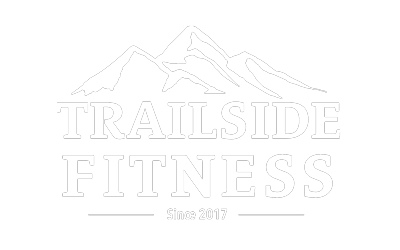Are You Overdoing Your Cardio For Hiking?
Are you overdoing your cardio of hiking? One common issue I find is that hikers push their cardio intensity beyond what is needed for hiking. If you’re a hiker or interested in hiking, your training intensity should match what is needed for hiking. This means that what you do in the gym should mimic what you will do out on the trail.
Your body has different energy systems, and the intensity you’re working out at will dictate which system you’re using. For hiking you mainly need the aerobic base system. About 85% to 90% of our day will be spent in this aerobic base system. This means you want the bulk of your training in this lower aerobic intensity. It’s easy to fall in to the more is better trap, but overdoing your cardio will train target the wrong energy system.
The right intensity matters
So, what does this mean in terms of intensity? The effort you’re putting into your cardio workouts should be one you can maintain for hours. Think about hiking – it’s an activity we typically do for hours without stopping to let our cardio catch up. For the most part, we can continue at a certain pace for a long time. That means we want to train that specific system to ensure we’re optimizing our training time and then allowing those systems to adapt physiologically to see those performances in real time once we get out on the trail.
An easy way to tell if you’re working in that aerobic system is to pay attention to your breath. Can you maintain your breathing through your nose 90% of the time? This might be challenging for some you, but it’s a great way to ensure you’re working at the right intensity. Nasal breathing acts as a governor, limiting how heavy and intense you can go. Once your lungs open up, it feels easier, and your output can be maintained with nasal breathing.
If you’re more into numbers, zone two training is what we’re looking for. This will vary slightly depending on your age, fitness level, heart rate, and other factors. You can use many calculators and tools online to help determine that, but zone two is where you want to spend the bulk of that training time.
Find the right pace to avoid overdoing your cardio
Aside from the nasal breathing aspect, we want to do a conversational pace. We’re trying to find a pace that allows us to continue talking. Suppose talking gets harder, and we’re into shorter one or two-word sentences. In that case, we’re pushing the top of zone two training and dipping into zone three, which will have a different intensity level and work a different energy system.
 As a hiker, you should spend more time training at lower intensity. Only about 15% of your training should be spent at a higher-intensity. This is where the hill ascents and hill intervals come into play. We’re targeting that system at that point, some of the workouts, depending on the type of workout you’re in or what phase of your training.
As a hiker, you should spend more time training at lower intensity. Only about 15% of your training should be spent at a higher-intensity. This is where the hill ascents and hill intervals come into play. We’re targeting that system at that point, some of the workouts, depending on the type of workout you’re in or what phase of your training.
In summary, for hikers, the bulk of your cardio training should be at a conversational pace – one where you can maintain nose breathing. This will help you optimize your training time and allow your body to adapt physiologically so that you can see those performances when you’re hiking.
By paying attention to your breath and finding the right intensity, you can ensure that you’re working in the right energy system. More importantly, you’ll get the most out of your cardio workouts!



Recent Comments